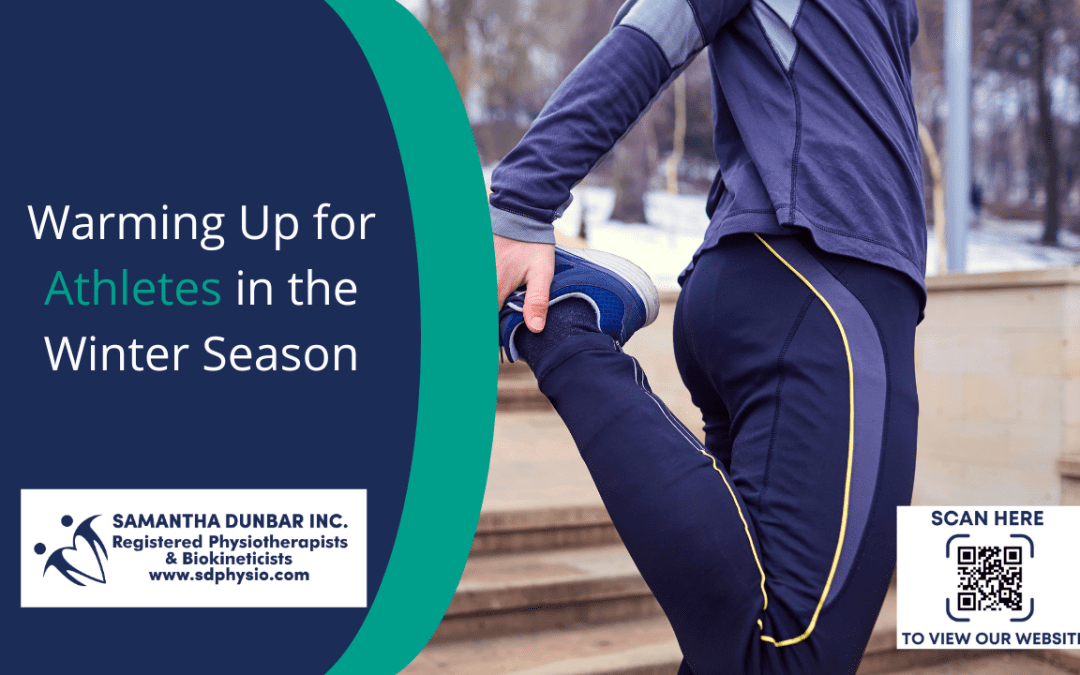As the winter months roll in, athletes face unique challenges regarding warming up before training or competition. The colder temperatures demand a different approach to ensure muscles are adequately prepared, reducing the risk of injury and optimizing performance. Understanding the difference between a warm-up routine in the winter compared to the summer is crucial for athletes to maintain their peak performance.
Why is a Winter Warm-Up Routine Different from a Summer Routine?
Temperature Impact:
- Muscle Stiffness: Cold temperatures cause muscles to contract and become stiffer, making them more susceptible to strain and tears. A good warm-up routine will increase muscle temperature and enhance flexibility.
- Joint Mobility: Joints are less mobile in the cold, necessitating longer and more focused warm-up routines to ensure a full range of motion.
Circulation:
- Reduced Blood Flow: In cold weather, blood vessels contract, reducing blood flow to the extremities. An effective warm-up routine helps enhance circulation, ensuring muscles receive adequate oxygen and nutrients.
Nervous System Activation:
- Slow Nerve Conduction: Cold can slow nerve conduction, impacting muscle response time. Warm-ups help prime the nervous system, improving coordination and reaction times.
Dynamic Stretching vs. Static Stretching
Incorporating dynamic stretches into your warm-up routine is essential in winter. Dynamic stretching involves active movements that increase temperature and blood flow, crucial for combating cold-induced stiffness. These movements also activate the nervous system, enhancing coordination and reaction times, vital for performance.
On the other hand, static stretching involves holding positions that don’t significantly raise muscle temperature and can temporarily decrease muscle strength and power. Therefore, dynamic stretching better prepares the body for physical activity, reducing the risk of injury and optimizing performance.
What Does an Effective Warm-Up Routine Look Like?
To increase your core temperature whenever possible, begin your warm-up in a warmer environment. This can include light cardio activities like jogging in place or jumping jacks. Wear layers of clothing that can be removed as you warm up. This helps maintain muscle warmth throughout the warm-up process. Start with low-intensity activities and gradually increase the intensity to slowly elevate the heart rate and muscle temperature.
An example of a proper dynamic warm-up includes:
- High Knees: Jog in place while lifting your knees to about hip level and pump your arms in coordination with your legs.
- Butt Kicks: Jog in place while kicking your heels up towards your glutes.
- Leg Swings: Stand next to a wall, swing one leg forward and backward, gradually increasing the range of motion.
- Walking Lunges with Rotation: Step forward into a lunge, ensuring your knee doesn’t go past your toes. As you go down into the lunge, rotate the upper body from side to side. Return to the normal position and push off with your back leg forward into the next lunge and repeat.
- Leg Cradles: While standing, lift one leg and grab it with both hands, pulling it up towards your chest while balancing on the other leg. Relax to the normal position, walk forward, and repeat on the opposite leg.
- Dynamic Calf Raises: Stand with your feet hip-width apart. Raise your feet onto your toes, then lower back down. To keep it dynamic, incorporate a bouncing effect.
- Inchworms: Stand with feet hip-width apart. Bend at the waist and place your hands on the ground, then walk your hands forward into a plank position. Perform a push-up, then walk your feet towards your hands and stand up.
Incorporating these exercises into your winter warm-up routine ensures that your muscles are properly prepared, reduce injury risk, and enhance your overall performance.
Enhance your athletic performance this winter, whether for yourself or the athlete in your family. Book a consultation at Samantha Dunbar Inc. and take the first step towards your fitness goals.













